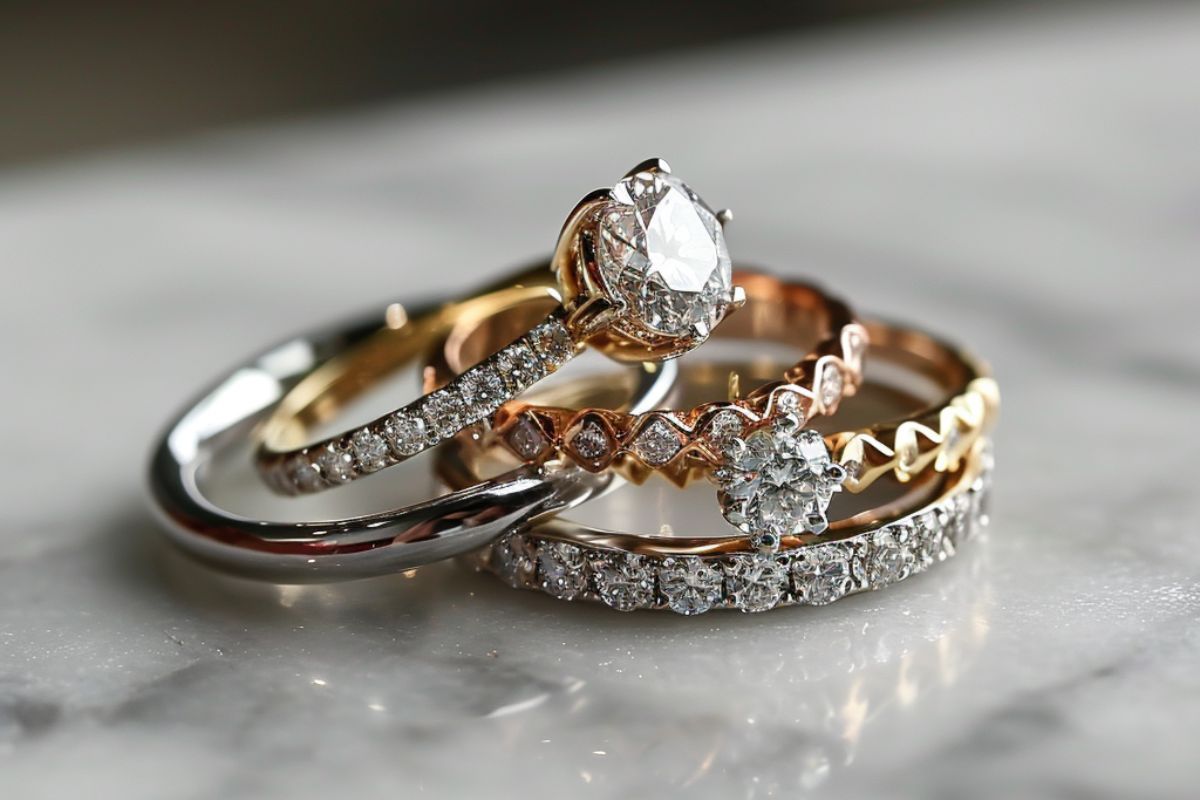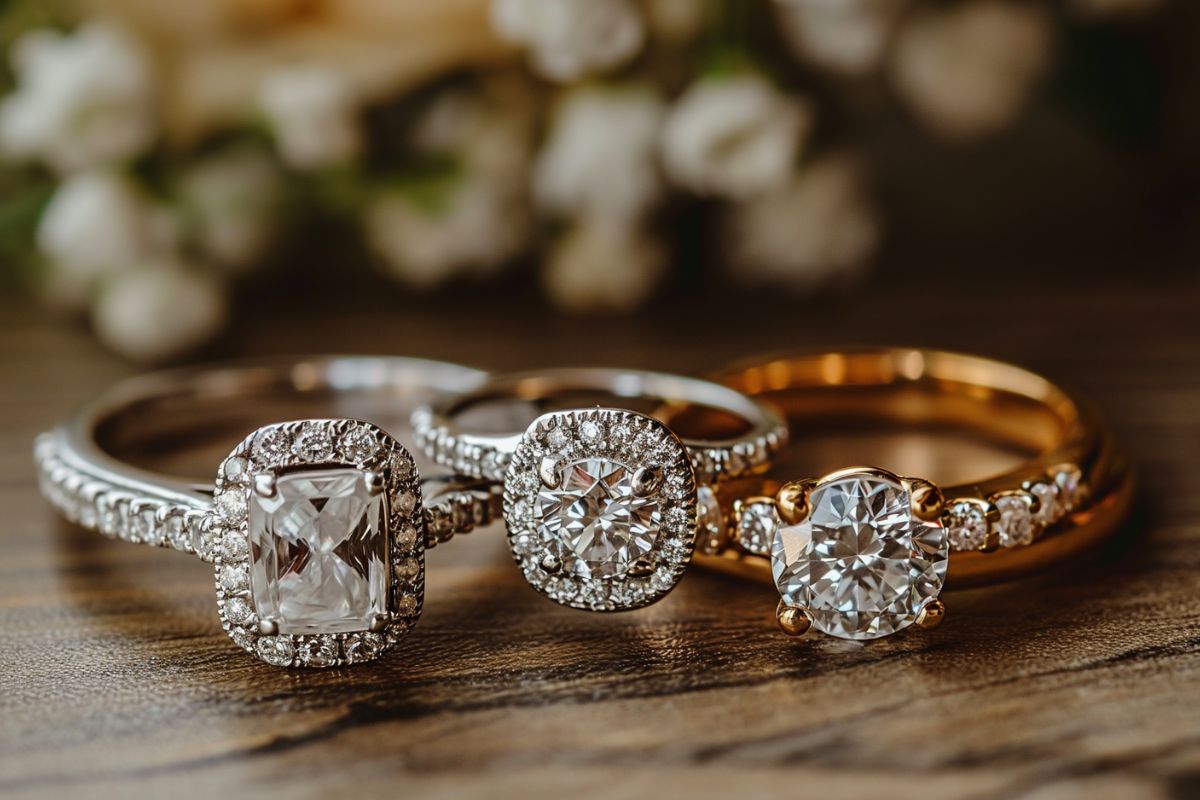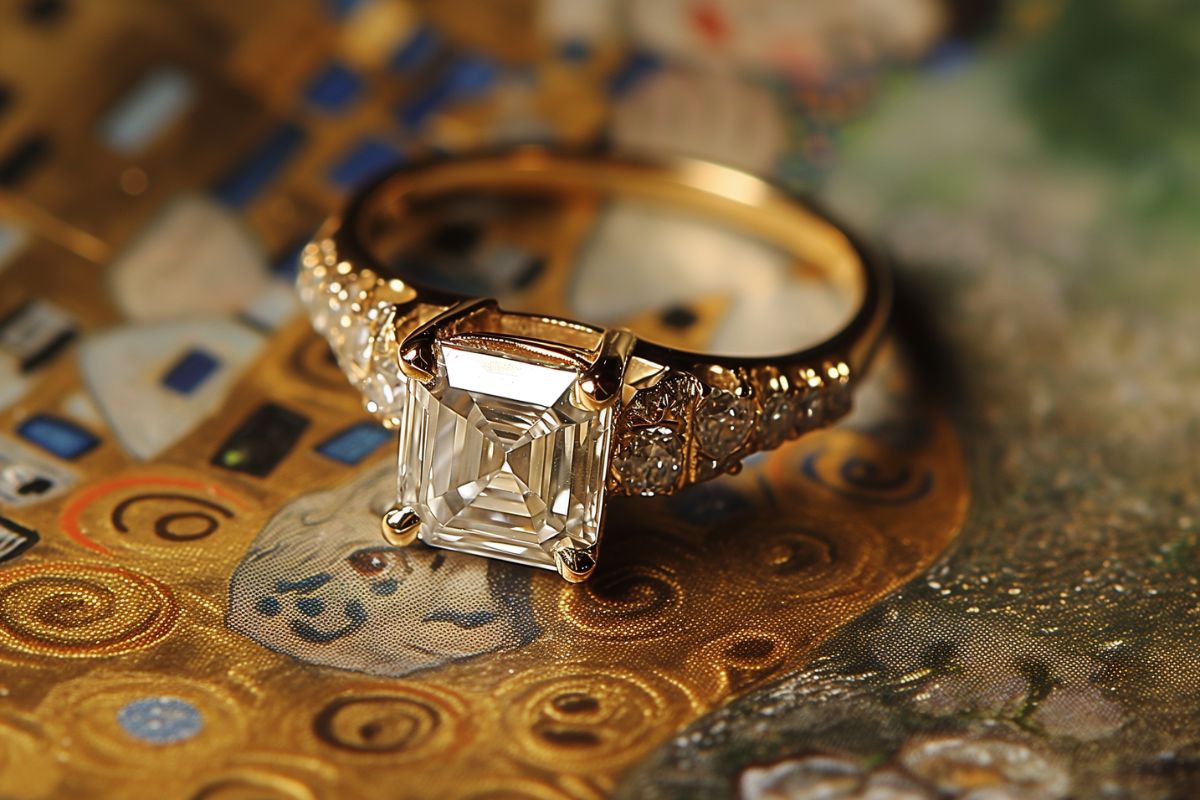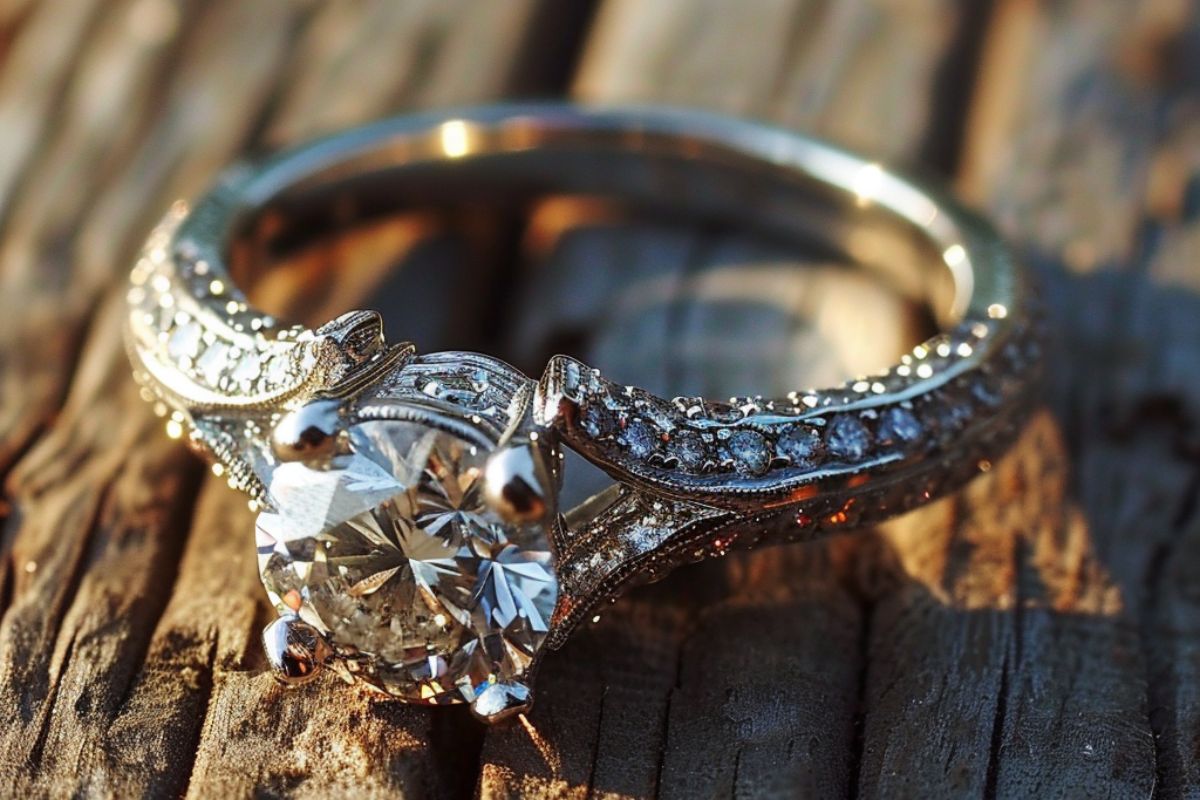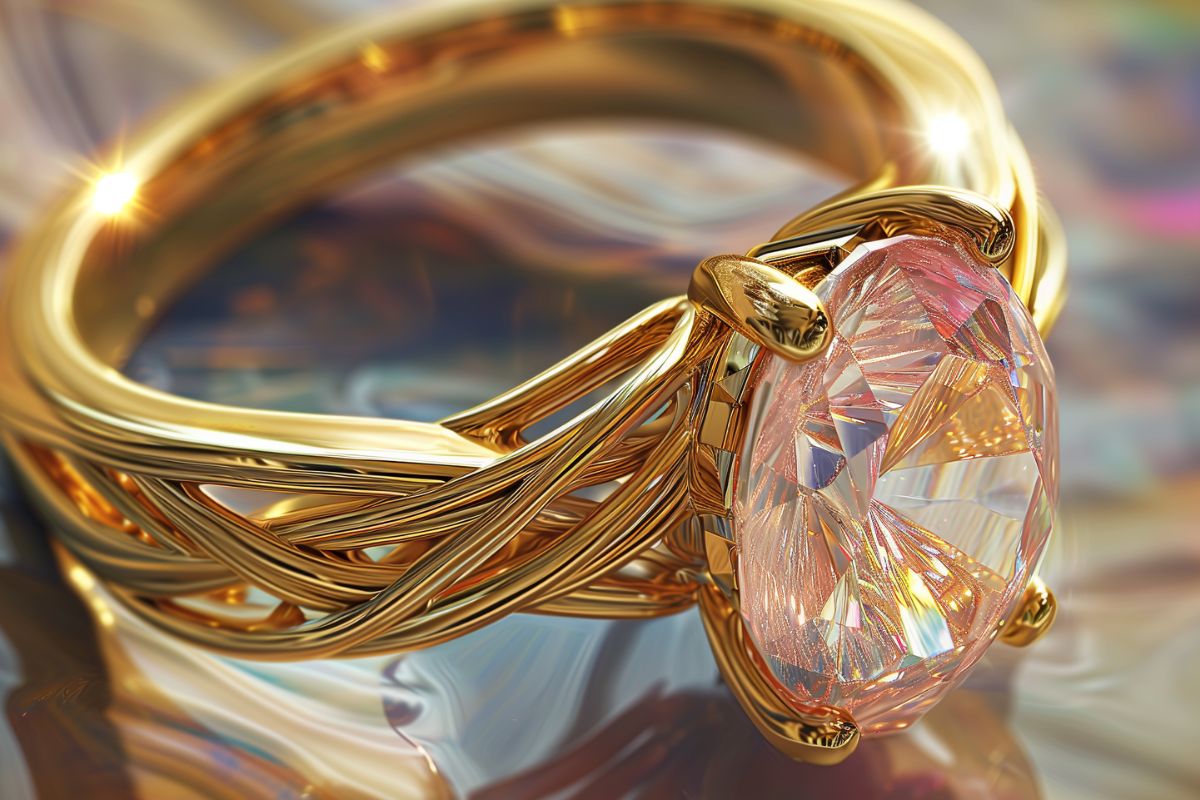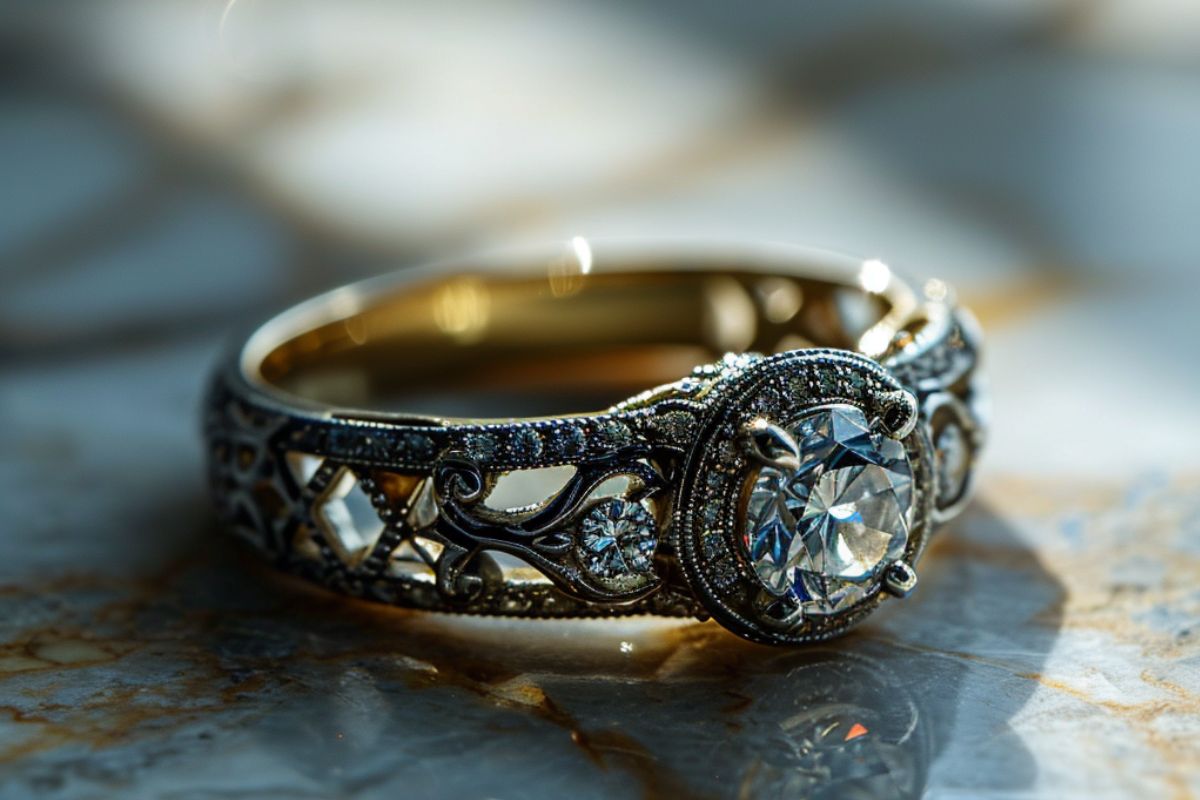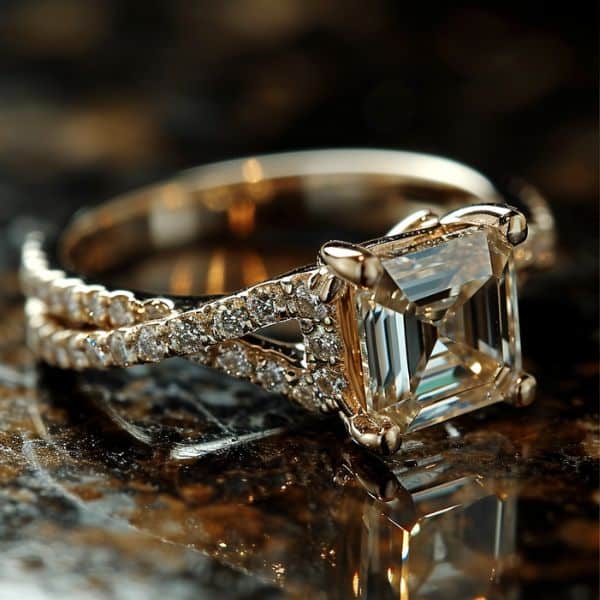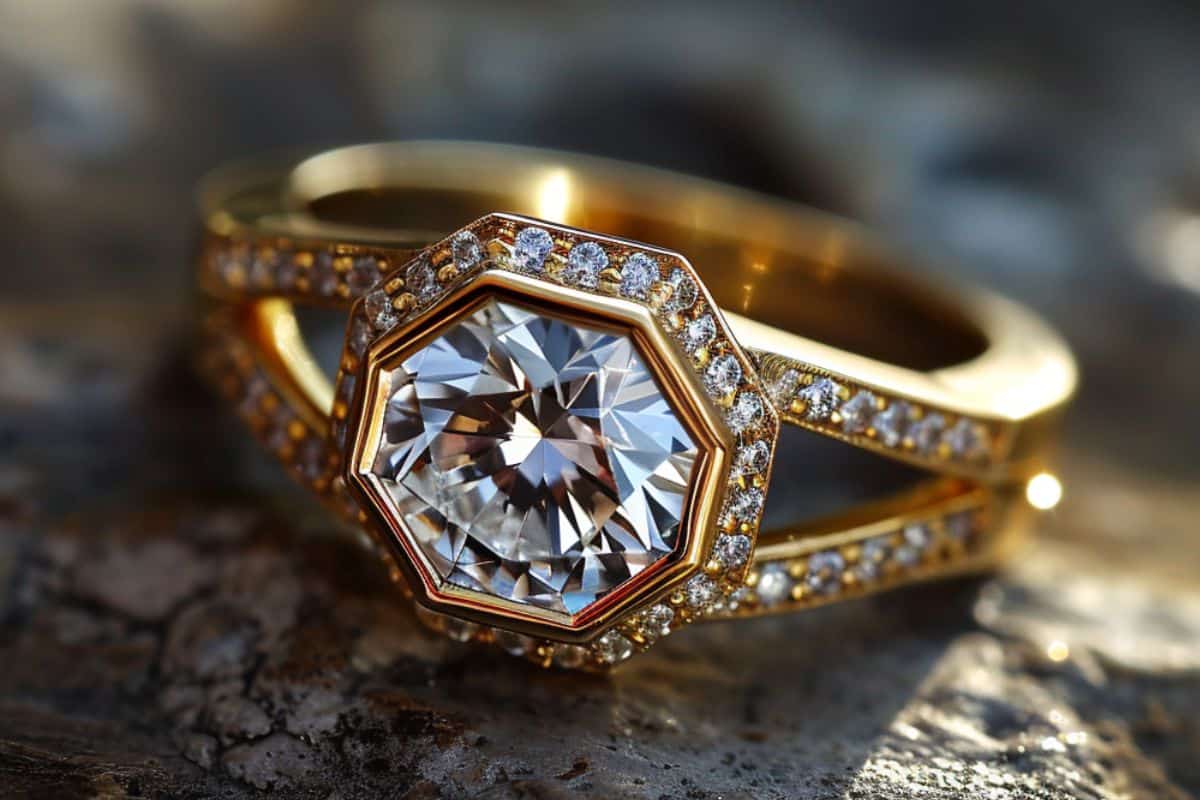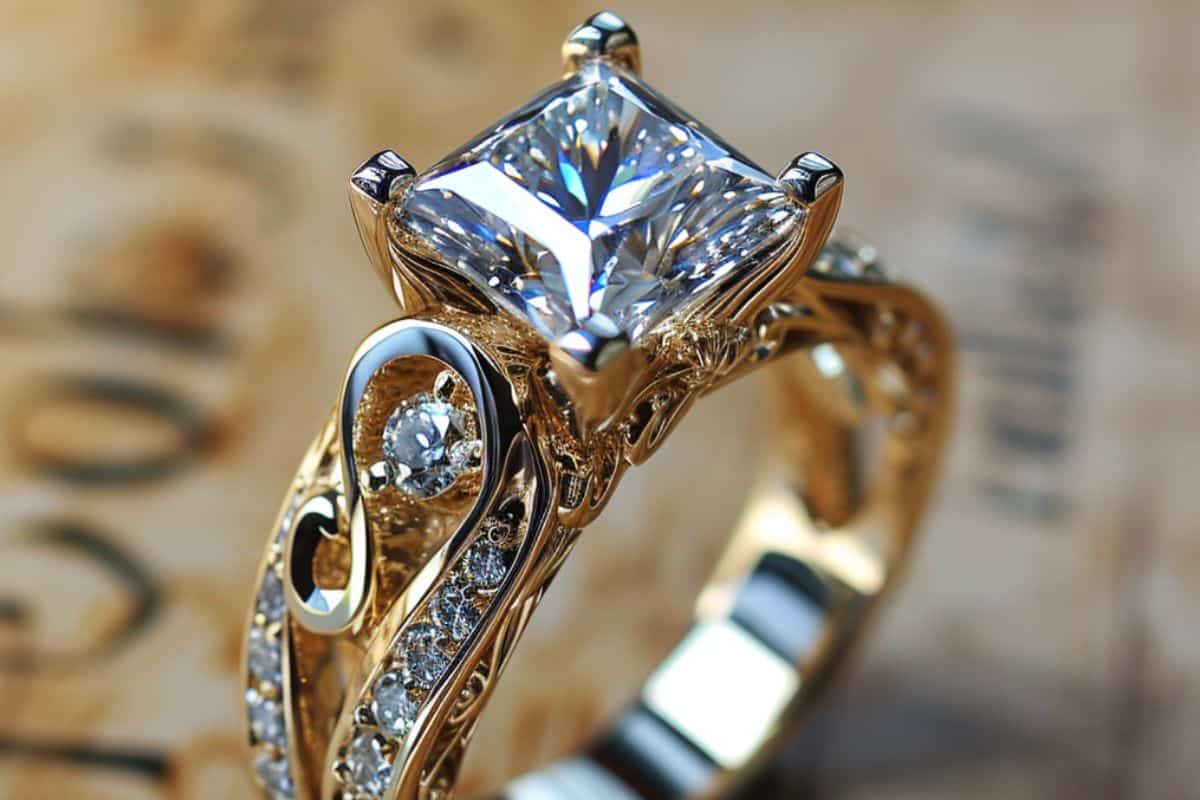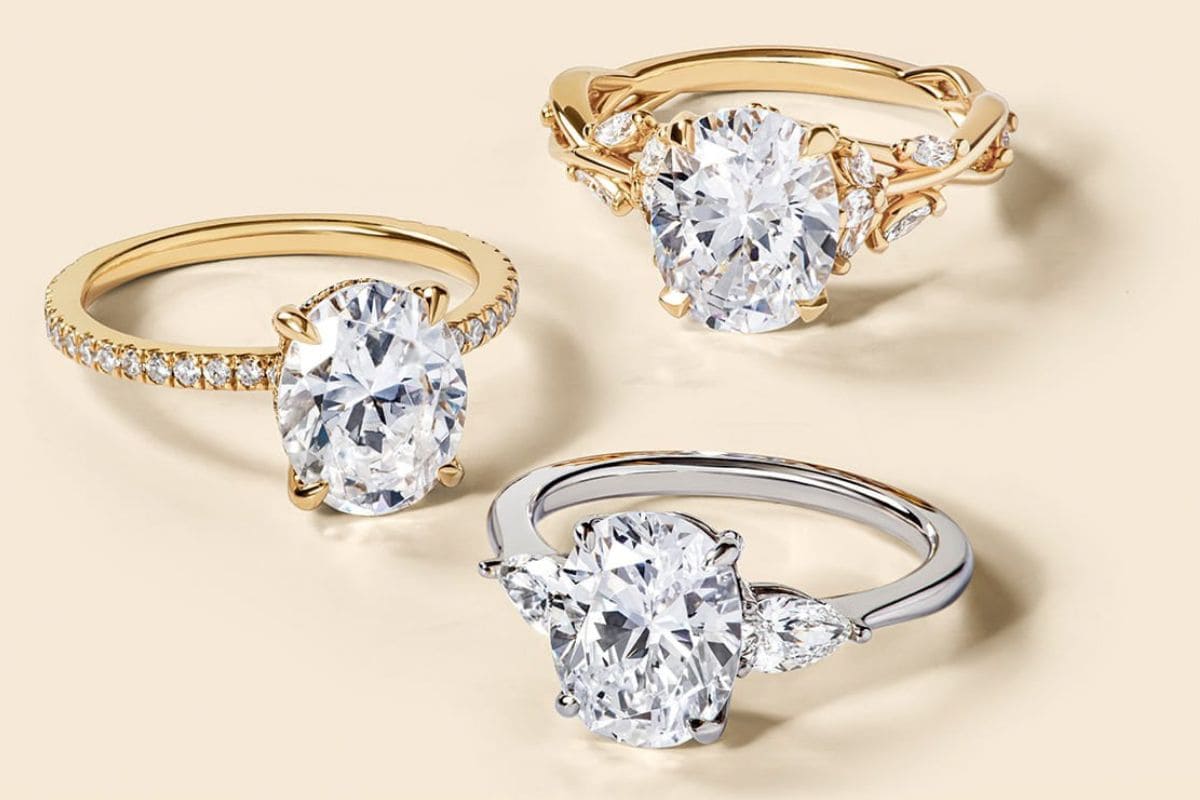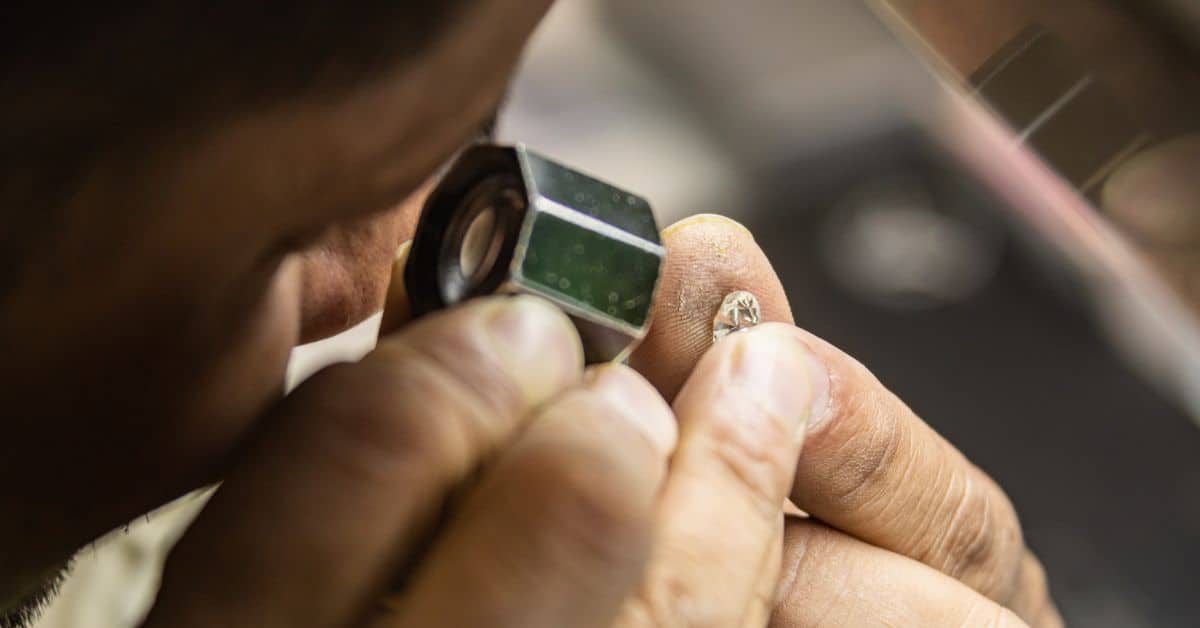
Lab-grown diamonds have become a popular choice for jewelry. Consumers have learned their benefits and how they compensate for some downsides of mining natural ones.
Now, jewelers offer lab-grown diamonds, also called synthetic or man-made, on engagement rings, necklaces, bracelets and more.
Let’s discuss the 10 pros and cons of lab-grown diamonds, so you’ll know if it’s right for you.
Pros of Lab-Grown Diamonds
Appearance
Lab-grown diamonds have the same physical and chemical properties as natural diamonds.
As an example, take a look at this diamond, and try to determine whether it’s natural or created in a lab.
Try the same with the one pictured below.
In fact, the first diamond is natural and the second is man-made, even though they appear identical.
While earth-mined diamonds take millions of years to form under the ground, lab-grown diamonds take only a few weeks to produce.
This is a result of two processes: high-pressure-high-heat (HPHT) and chemical vapor deposition (CVD).
HPHT places carbon under extreme heat and pressure. It reaches between 1,300-1,600 degrees Celsius to mimic the conditions within the earth that form natural diamonds.
The crystal is cut and polished by the manufacturer into the final lab-grown diamond.
CVD diamonds involve a “seed” diamond placed into a chamber under high temperatures. Gasses like hydrogen and methane are added.
The carbon forms atomic bonds with the seed to create a new diamond.
The result of both methods is a diamond that appears identical to a natural one. Even trained gemologists require special equipment to tell the difference.
When it’s placed into a setting, you’ll have an engagement ring that no one would ever guess is man-made.
So if you’re worried someone viewing your lab-grown diamond could identify it as such, there’s no reason for concern.
Price
Another pro of lab-grown diamonds is they cost significantly less than natural ones.
High-quality, earth-grown diamonds are rare. Most found have strong color and noticeable inclusions, so they sell for a lower price.
When you’re browsing diamonds at a retail store, they likely represent only a small fraction of those that were mined. The vast majority aren’t fit for luxury jewelry, so the ones that are command a premium.
The process of mining also incurs huge expenses. They often pass through many hands before reaching the final buyer.
Each buyer charges a markup along the way.
Lab-grown diamonds have a shorter supply chain, which reduces costs.
To understand the differences in price between lab-grown and natural diamonds, I compared costs from James Allen, where I bought my wife’s engagement ring.
The round-cut diamonds had the following traits:
- Carat weight: 0.75
- Cut: Very good
- Color: F
- Clarity: SI1
The natural ones sold for an average of $2,500.
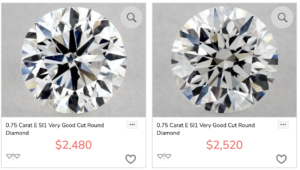
Lab-grown ones with the same grades sold for an average of $658.
That’s a 280 percent increase in price for natural over lab-grown.
As another example, I compared lab-grown diamonds from Clean Origin with natural diamonds from James Allen. They earned the following grades:
- Carat weight: 1.00
- Color: J
- Clarity: SI1
- Cut: Ideal
At James Allen, the average price was $4,026, with a range of $3,260-$4,380.
The lab-grown ones with those same grades averaged $1,197. The range was $1,033-$1,286.
As you can see with these examples, you’ll save 40-60 percent by choosing a lab-grown diamond.
Popularity
This chart shows the relative change in interest over time of people searching for lab-grown diamonds.
In recent years, the popularity has increased.

As buyers have gained an understanding of their advantages, it’s natural more people have become interested.
This is also demonstrated by several of the largest companies in the industry pursuing this market.
For example, James Allen has more than 22,000 synthetic diamonds listed, including lab-grown diamonds to go with their fine jewelry.
Blue Nile previously only offered natural diamonds but now has sells GIA-graded lab-grown diamonds, in addition to other types of jewelry with these gems.
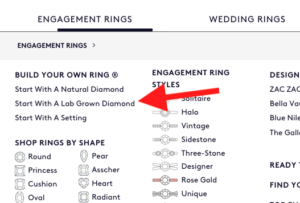
Clean Origin, founded by veterans of the industry, sells this type exclusively.
Even brands with household names like Jared, Kay, and Zales have entered the market.
Environmentally and Socially Conscious
Buyers are also drawn to lab-grown diamonds because they’re considered more environmentally and socially conscious.
It requires significant resources to run mining operations, which often take their toll on the environment.
For example, the practice has been known to cause soil erosion, which is evident in the image below.

According to the World Diamond Council, large amounts of soil must be removed from the earth at each mine. This includes waste rock, sand, and soil that accumulates in the surrounding areas.
This is preceded by the exploration process, which has its own environmental impact.
When diamond deposits are found on seabeds, the area also needs to be cleared to access the diamonds. Unless it’s replaced, the inhabitants won’t return.
The council also notes mining diamonds uses multiple forms of energy: hydrocarbons and electricity. This releases carbon emissions into the air.
The industry has also earned a reputation for exploitative labor practices and contributing to unstable politics.
In recent years, guidelines like the Kimberley Process, which most prominent jewelers adhere to, have sought to remedy this issue.
Additionally, companies like Brilliant Earth have shown a spotlight on these challenges and sought to determine a more eco-friendly and socially conscious way to sell diamonds.
Lab-grown diamonds avoid many of these problems. It doesn’t require deforestation or building extensive mining operations to extract them from the ground.
They’re made in high-tech labs around the world instead of being tied to a specific location.
Fit for Everyday Jewelry
Cons of Lab-Grown Diamonds
Resale Value
don’t recommend buying diamonds with the intent to sell them for a premium at a later date. In many cases, even natural ones lose up to half its value after you buy it.
But if it’s large, colorless, and has no visible inclusions, it could hold more of that value over time.
Lab-grown diamonds have minimal resale value, even compared to natural diamonds, because they aren’t rare. Companies can mass-produce them, and it’s not as rare for them to score high on the color and clarity scales.
It’s unlikely you’ll find a jeweler willing to buy it, because they could purchase an identical one from another supplier.
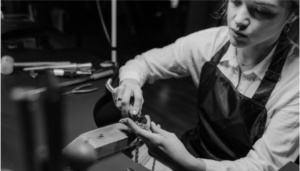
If you resort to an online marketplace to sell it to an individual, you’ll have to settle for a fraction of the cost.
Buy lab-grown diamonds with the intent that it won’t change hands beyond the first person to wear it. In most cases, you’ll be disappointed if you’re under the illusion its value will go up over time.
Energy Consumption
Although the overall impact on the environment is lessened by lab-created diamonds compared to natural ones, they do require huge amounts of energy to create.
In fact, a Trucost report found that on average, the greenhouse gas emissions were three times greater when producing lab-grown diamonds compared to mined diamonds.
The machines required to create them produce tremendous heat. The energy is taken from local power grids located in places that rely on coal and natural gas.
These power sources are considered unsustainable, so it’s depleting those resources.
For example, it’s been noted how many lab-created diamonds produced with HPHT are from China.
Fifty-five percent of its power is from coal. In India, 75 percent of its power grid relies on coal.
So while lab-grown diamonds have made improvements mitigating the environmental impact, there are some areas where it’s yet to solve the challenge.
Impact on Local Communities
Although the industry has taken heat for its reputation of poor labor practices, some have also noted the economic opportunities that have been provided to poorer regions because of diamond mining.
In some areas, diamonds are a primary source of economic growth.
These are lost when companies shift from setting up mining operations and instead build labs in other areas of the world.
Availability
Even though some of the most prominent jewelers have started selling man-made diamonds, there are still far fewer options on the market compared to natural ones.
For example. Ritani lists about 165,000 natural diamonds on their website. There are about 93,000 lab-grown diamonds available.
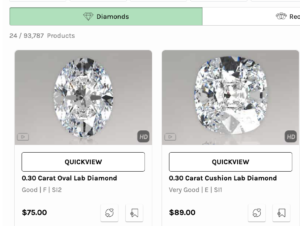
That’s still a huge selection, but it’s almost half of its earth-mined inventory.
You’ll find close to 250,000 round-cut, natural diamonds from James Allen compared to 23,000 synthetic ones.
This concept plays out across most vendors who sell both.
Tiffany & Co., a jewelry retailer, has refused to enter the lab-grown diamond market.
The company has said they don’t view them as a luxury product and don’t believe it fits the type of jewelry their customers buy.
And if you walk into a local jewelry store, it’s likely they’ll only sell natural diamonds.
That’s why if you’re planning to purchase lab-grown diamond jewelry, I recommend exploring online jewelers. Take the time to view high-resolution images and the grading reports so you know what to expect.
As a backup, always read their return policies to ensure you can receive a full refund. A 30-day policy is typical.
Engagement Ring Tradition
The vast majority of engagement ring diamonds are natural, and that’s been the tradition.
For example, when I was searching for an engagement ring for my now-wife, I was speaking with a jewelry consultant at a diamond retailer nearby.
He didn’t even ask whether I was considering natural or synthetic.
He assumed I’d choose a natural diamond, although its higher price may have been a factor in pushing me that direction.
Many buyers don’t want to break tradition with a lab-grown diamond.
In fact, Sally Morrison of Lightbox said their research indicates consumers want mined diamonds for their engagement ring but are more content with lab-created ones for everyday wear.
This is especially the case for older consumers. They aren’t as open to breaking tradition and choosing one created in a lab.
But when younger buyers are selecting a tennis bracelet or necklace, they’re far more open to lab-grown diamonds than if they’re searching for a traditional engagement ring.
That’s why vendors like Clean Origin go beyond diamond rings and sell promise rings, pendants, and bracelets.
But as we’ve discussed, these traditions aren’t held as strongly anymore.
As synthetic diamonds become more popular, it won’t be an anomaly if someone mentions their engagement ring diamond is lab-created.
How to Know if Lab-Grown Diamonds are Right For You
Once you understand the pros and cons of lab-grown diamonds, you’ll make an informed decision about whether it’s right for you.
Here are some tips to help you decide.
Consider a lab-grown diamond if:
- You want significant savings on costs compared to a natural diamond
- You’re interesting in the environmental benefits that result from avoiding mining operations
- You aren’t concerned that most other engagement ring diamonds are earth-mined
A natural diamond might be the right choice for you if:
- You want the satisfaction that it’s earth-grown and truly one-of-a-kind
- The price difference isn’t a concern for you
By combining either with an elegant setting, you’ll create the perfect diamond ring.

Jacob Clarke
Jacob Clarke is the founder of TeachJewelry.com.
He earned an Applied Jewelry Professional Diploma from the Gemological Institute of America (GIA) and now brings you essential information about diamonds, settings, and more.
Jacob has consulted with leading jewelry brands, and his work has been cited in Clean Origin, Diamond Nexus and industry publications.
He's also a member of the International Gem Society.
He enjoys discussing jewelry with readers, so contact him with any questions at jacob.clarke@teachjewelry.com.





